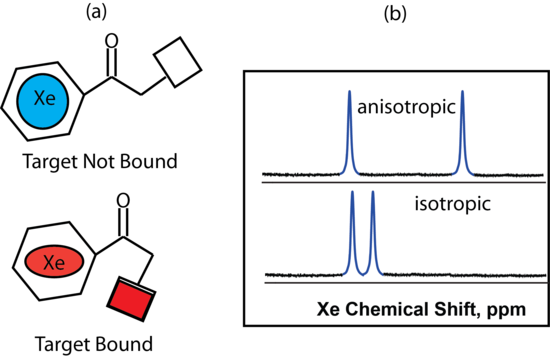Orienting Media
Current molecular sensors in solution state NMR detect ligand binding through a change in the isotropic chemical shift. These spectra have high resolution, but are insensitive to anisotropic interactions, such as dipole-dipole coupling and the anisotropic component of the J-coupling and chemical shift tensors. In applications such as molecular sensing, these anisotropic components may change greatly with the binding of an analyte due to changes in shape or orientation of the complex, but these changes would be invisible to liquid-state NMR. We are currently working with oriented media, such as stretched gels and bacteriophage solutions that will orient the molecules and revive these effects in the NMR spectrum. When combined with the hyperpolarized xenon biosensors already developed in the Pines lab, this technique promises new levels of sensitivity in molecular recognition.

In the figure above (a) shows a change in shape of a molecular sensor upon analyte binding and (b) shows the change in the chemical shift with and without the anisotropic component.
Current Members:
Jonathan King
Clancy Slack
Jinny Sun
Keunhong Jeong
